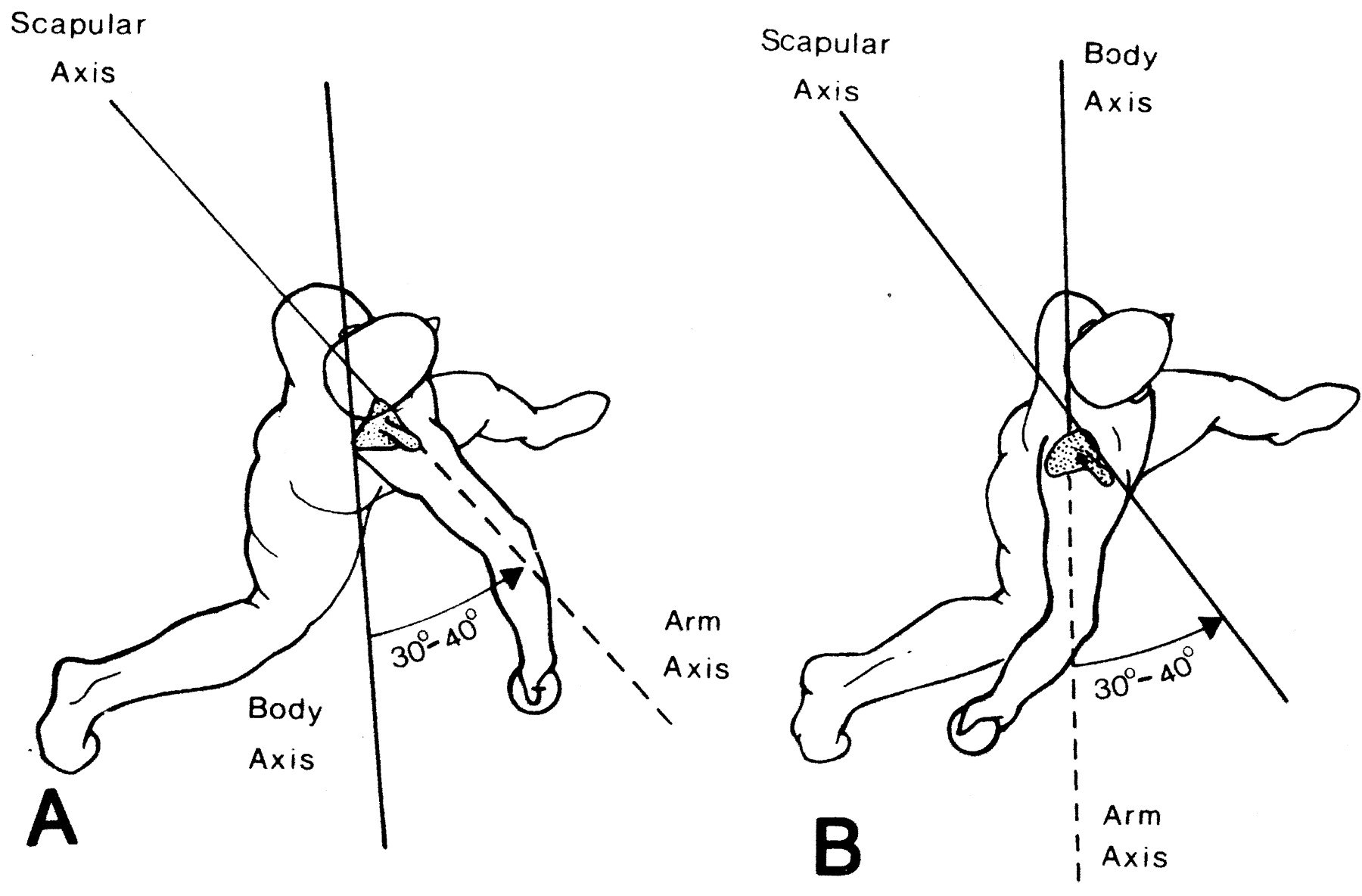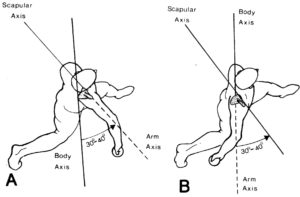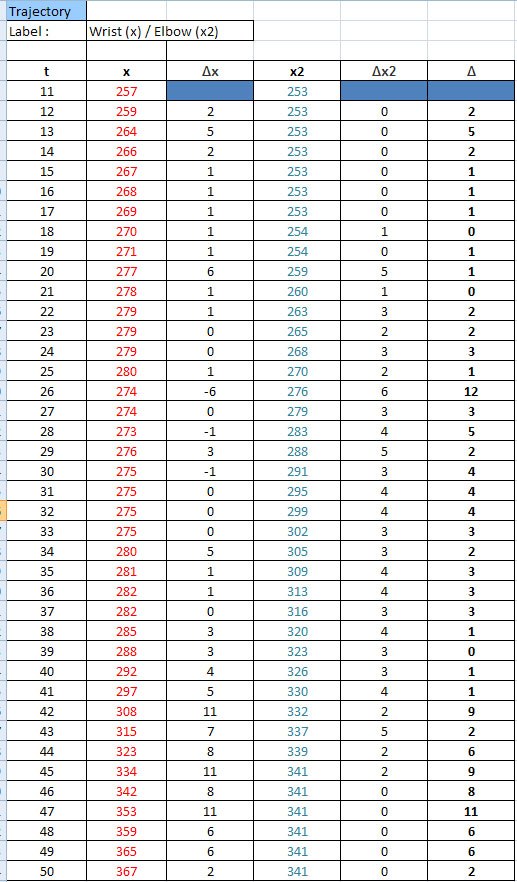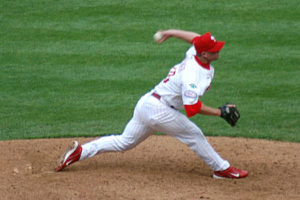Kinematic Analysis: Wrist to Elbow Relationship

We talk a lot on this blog about training for baseball, but not much about mechanics or the actual pitching motion in general. Today I’d like to take a quick look at one part of pitching mechanics that we study: The relationship between the pitching arm wrist and the pitching arm elbow during the late-cocking phase of the pitching delivery.

In the late-cocking phase of the pitching delivery, there are very high forces placed on the shoulder and arm segments as they rotate upwards of 937 degrees/second and 1160 degrees/second, respectively. Part of what can cause the serious forces on the elbow in particular is how the arm lays back in Maximum Shoulder External Rotation (MER).
How the arm reaches MER is vitally important – in pitchers with timing flaws, the forearm violently lays back behind the elbow in rapid succession, causing significant torque on the elbow. However, this can be minimized with training and slight mechanical changes, both of which are beyond the scope of this introductory article.
One way we study the relationship between the pitching arm wrist and elbow is to perform a trajectory analysis on a pitcher, measuring the path of the pitcher’s driveline and the rate of change of various arm segments. While I can’t show you any video from my current clients (privacy reasons and all), I can show you some anonymous data from a first-time client that I have handy. This pitcher is a youth pitcher who had his recent entry evaluation with high-speed footage taken within the past month. The chart below details the relationship between the pitching elbow (blue) and the pitching wrist (red). Also shown in the chart are the rates of change (delta) between each time interval (0.00476 seconds, if you were wondering!) as well as the delta between each delta! (Absolute values were used in measuring the rate of change of the deltas.)

What does this chart tell us? Well, the red and blue numbers are measured in pixels and detail the wrist and elbow’s paths, respectively. In this student’s case, the pitching elbow rapidly outpaces the pitching wrist, causing the forearm to lay back fairly rapidly in MER. The sum of all the deltas in the right-hand column expresses the absolute difference in rates of change between the two segments of the arm and tells us something about timing flaws. While not every pitcher should be within a given range, this is but one more variable that we use to analyze a pitcher’s mechanics and can tell us a lot about how the arm is used.
Comment section
Add a Comment
You must be logged in to post a comment.

Trip Somers -
Your final column does not show negative values.
For example, data point #26 has -6, 6, and 12, while data point #47 has 11, 0, and 11. The relationship is clearly different at these two points, but the final column says it’s nearly the same.
My impression is that positive numbers would be good, indicating that the wrist is moving in the right direction faster than the elbow, while negative numbers would indicate the wrist moving more slowly than the elbow or even backwards.
Can you explain why there’s no differentiation made?
Kyle -
The column with no negative values is the absolute value of the difference between the deltas. I think that this isn’t necessarily the correct thing to measure, because what I mostly look at this chart for is exactly what you pointed out – negative numbers indicating that the wrist is moving more slowly (this is probably inevitable to some degree from a kinesiological sense) or even backwards (the real problem).
I just wanted to publish the entire data from where I estimated the start of the driveline. But you’re right; how the arm lays back into MER is the phase I’m most concerned with. The other stuff is just confusing the issue.
Trip Somers -
I assume you mean that you’re looking for negative numbers in the delta-x column. The interesting thing is that if a negative delta-x were paired with a negative delta-x2, the negative delta-x holds less significance because they are moving in the same direction (even if it is the wrong direction).
My thought is that the difference between the two columns should not be an absolute value. This way the delta-deltas would not only show a magnitude, but it would indicate which joint is accelerating faster. A negative value would show that the elbow is accelerating faster, while a positive value would show that the wrist is accelerating faster.
An absolute value seems to blur the wrist/elbow relationship.
I believe this is in line with your goal, but I could be wrong.
Kyle -
“My thought is that the difference between the two columns should not be an absolute value.”
Agreed.
Stephen Strasburg, Mechanics, and his “Timing Flaw” | Driveline Baseball -
[…] We’ve been doing these types of measurements for more than a year here at Driveline Baseball in our biomechanics lab, as pointed out in January 2010 in the article Kinematic Analysis: Wrist to Elbow Relationship. […]